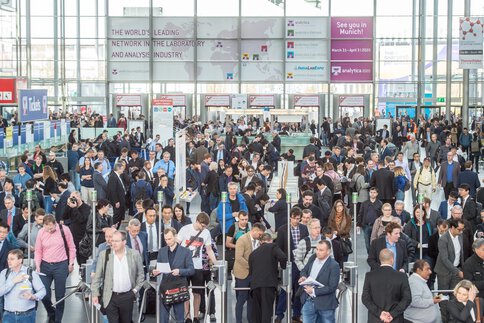Controlled polymerization: From monomers to plastics
The density, rigidity and other properties of plastics depend on how the individual building blocks, the monomers, link. Do they form straight or branched, short or long chains? Do the chains cross-link? When is the polymerization completed? Spectroscopic methods and sensor systems ensure that everything goes according to plan during polymer production.
Plastics are often made at high temperatures and pressures. Therefore, the process parameters are monitored for safety on the one hand, but also to ensure the quality of the polymer. To track the polymerization, measurements are conducted where the reaction occurs. Spectroscopic methods deliver real time results. Thus, near-infrared spectroscopy detects functional groups like hydroxyl groups, which reflect, for example, the course of the reaction in polyurethane production, or carboxyl groups which serve as a parameter in the production of polylactic acid. The end point of a polymerization can also be determined spectroscopically.
In inline polymerization monitoring, ultrasonic sensors have also proven to be robust and low-maintenance measuring instruments with long-term stability. They are based on the marked increase in the speed of sound during the course of the polymerization. In polyvinyl chloride (PVC), for example, sound propagates more than twice as fast as in its monomer vinyl chloride.
Methods of particle analysis also contribute to the understanding of the process. In the rather common suspension polymerization, which is used, e.g., to make PVC and polystyrene, the monomer is dispersed in a liquid in which it does not dissolve. Particle analysis measures the size distribution and shape of the monomer droplets as well as of the resulting solid particles and provides important information for process control.
Based on decades of experience with polymerization processes, monitoring them is generally considered to be well established. However, the trend to more efficient and sustainable methods––from solvent-free gas phase polymerization to bioengineering methods and plastics production in microreactors––goes hand in hand with new monitoring techniques. But this is an area with plenty of scope for more innovation.
This might be also of interest to you
Customized plastics
New plastics conduct electricity or store information. Analysis in polymer research.

Find out about the trends and developments in fields of monitoring polymerization at analytica:
polymer • monomer • plastics • polymer analysis • analysis • polyurethane • polylactic acid • NIR spectroscopy • ultrasonic sensor • particle analysis • process analysis • process analytics • polymerization
